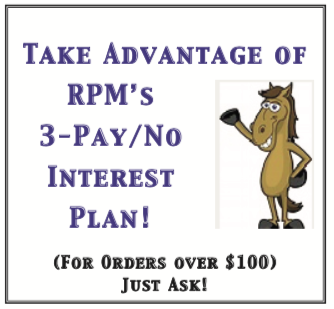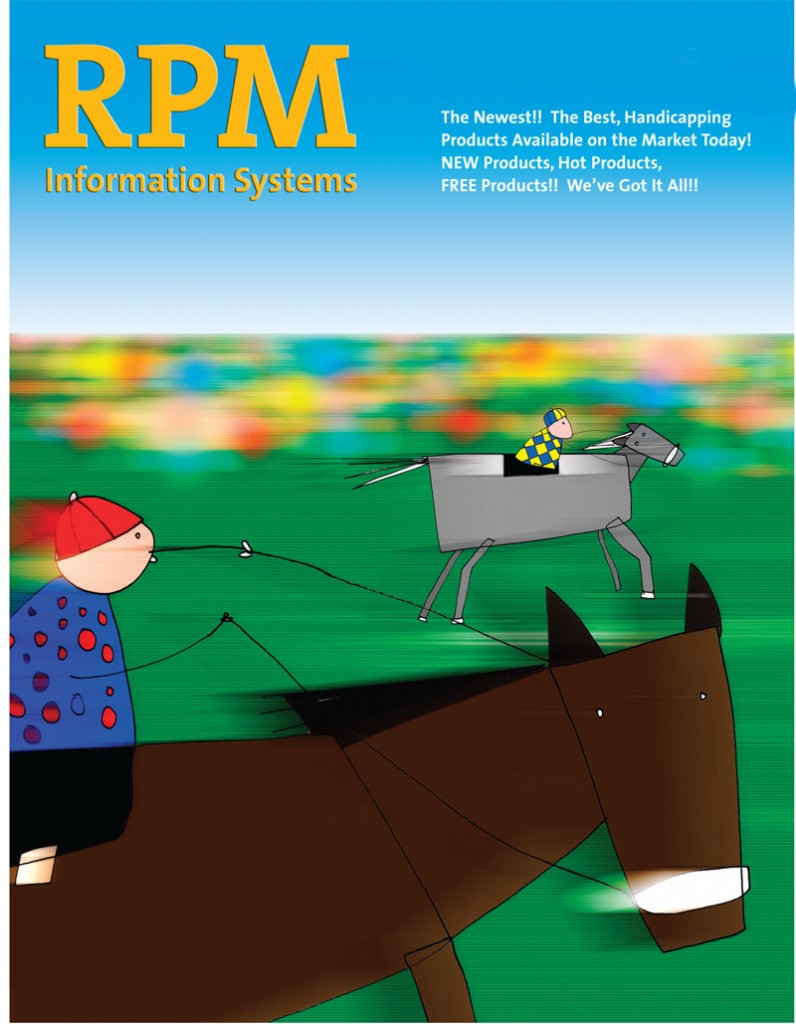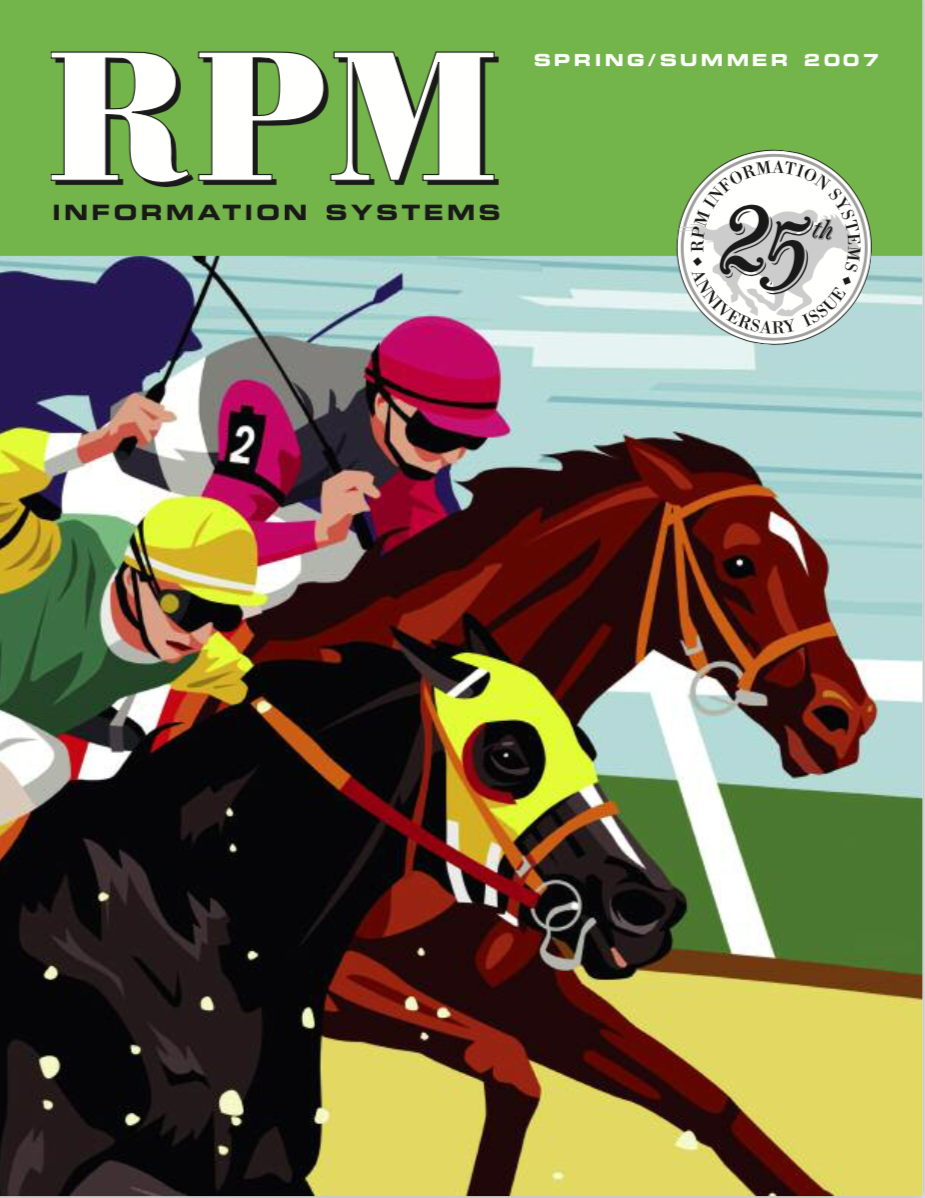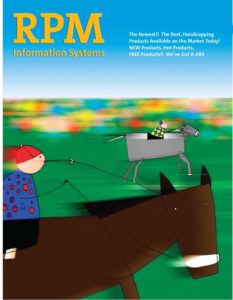Interesting Trainer Research From Mark Cramer
RESEARCH:
TRAINERS SUSTAINERS
For a horse owner, a sustainable trainer is one who wins enough purses to pay the bills and make a profit. For the player, a sustainable trainer is one we can bet on automatically and know that we will have a profit at the end of the year. The Matlow example in the last issue is one example: profitable by my records since 1990 in the first-time starter category.
I noted that Matlow, and other long-term profitable trainers, often have win percentages slightly below 20 percent, contrary to Ed Bain’s requirement of 30 percent. By demanding 30 percent on paper, Bain usually ends up the month with a percentage in the low 20s. In other words, the percentage is not sustainable but by demanding a higher percentage, he protects himself from the effects of the probably erosion. Some of his 30 percent trainers hang in there for much longer periods, their win percentage does not erode, but then their average mutuel erodes. He also insures himself against erosion by discarding the declining trainers at the end of each meet, and adding up-and-coming ones as well.
Without at all detracting from Bain’s method, I’m researching for something different: the trainer who is sustainable in the bottom line over the long period. This would mean that his average mutuel would not decline, and for this to happen, he would have to somehow stay out of the spotlight.
The research project I’m about to present is a hands-on item-analysis job. Rather than take each and every trainer ever computerized, I’m trying to find out what exactly are the dynamics of a sustainable trainer. I’ve zoomed in on three circuits: Kentucky, Illinois and New York, and I through in Monmouth as well, as a typical track that would not have the most recognizable trainers in the age of national simulcasting. It seemed to me that some trainers are more successful at keeping out of the limelight, and for the serious trainer handicapper, this (I mean laying low) may be just as an important factor as actually training the horse.
From this research, I was not only searching for an automatic bet. Just as important was finding out the minimum acceptable win percentage when deciding a cutoff point for any other system. For example, my previous work on the Maiden Comeback method (no more than 2 md sp wt races, laid off, comes back at md sp wt at equal racing circuit) arbitrarily required the trainer to have a 12 percent or better win rate. I wanted to isolate the most effective minimum hit rate.
Any trainer with a flat-bet profit for all his mounts in a given category must, by definition, be able to win with more than his fair share of longshots. Previous C&X research has shown that the higher the hit rate of a trainer, the more he gets extra longshot winners. In other words, there is a correlation between longshots and hit rate. That doesn’t mean that each and every high percentage trainer has a flat-bet profit, and the reason for unsustainability is that many, but not all high-percentage trainers bring too many low-odds horses to post. So Baffert, for example, can win with War Emblem but we cannot win by betting Baffert automatically because most of his horses are overbet.
Method of research
I chose trainers at random. Any trainer I happened upon was automatically tallied, so that I could, for example, have a Fairmount trainer among my Arlington pps, or a Florida trainer who happened to ship to Kentucky. I tallied only trainers who showed a positive return on investment for samples of at least 100 races within a particular specialty category. I then marked down the percentage of winners for each flat-bet-profit find.
The next step was to tally which particular win percentages have the most examples of flat-bet profits, and which ones had the least. I would stop only after a clear curve developed.
Finally, I would dig more deeply into each trainer record to search for the “why” of his success.
General findings
Of the random sample of trainers studied, there was definitely a curve.
Between hit rates of 10% through 15%, there were 21 trainer categories with a positive roi.
Between hit rates of 16% through 21%, there were 47 trainer categories with a positive roi.
Between 22% through 27%, there were 15 trainer categories with a positive roi.
Naturally, there are fewer trainers with higher hit rates of 22% and above, so the curve does not mean to exclude these higher hit rates. It only shows that sustainability can be found in the middle ranges of win percentage. On the other hand, there are more trainers whose win percentage is 15% or below, so in that range, it would be far less likely to find a sustainable trainer.
My first conclusion is that, in the long run, it would be better to require a minimum of 16 percent winners, rather than a minimum of 12 percent. This is validated by the fact that in the 14-15% range, there were 8 winning categories, while in the 16-17% range, there were 15 profitable trainer-specialty categories with at least 100-race samples.
If you break it down by individual percentage, the curve is still there but it’s uneven. For example, there were slightly fewer profitable categories between 18-19 percent than between 16-17 percent, but there were by far the most winning categories between 20-21 percent, and then it dropped off suddenly when the parameter was 22-23%.
The irregularities can be expected, given the relatively moderate number of categories. But even with such irregularities, if you visualize it as a graph, the curve is strikingly clear. The best range is between 16-21%.
I went into this with only a suspicion that 18 percent was the magic number. I was more or less near. The point is that it would be easier for a trainer to remain out of the spotlight by winning at less than a sensational clip. But if he wins at a less than competent rate, then there will be no profit for his pari-mutuel backers.
Patterns
Alright, 16% seems to be the best cutoff point. Let’s move on to more specific findings. I was searching for any specific specialties might be more valuable more trainer-dependent and therefore more valuable in composing some future methodology. One particular pattern emerged. Let’s lay down the data and you scan it for the pattern match.
Paul McGee
With claimed horses: 108 races, 20% wins, $2.40 return for each $2
Sprints: 199 races, 15% wins, $1.27 return
Dirt: 322 races, 17% wins, $1.54
Thomas Amoss
With claimed horses: 254, 30%, $2.14
Sprints: 420, 26%, $1.63
Dirt: 544, 26%, $1.68
Kelly Breen
With claimed horses: 157, 25%, $2.36
Sprints: 258, .20, $168
Dirt: 399, .22, $174
John Cox
With claimed horses: 35% wins, $3.20 return
Dirt: 30% wins, $2.54
Joseph Broussard
With claimed horses: 11% wins, $3.63
Dirt: 11% wins, $2.39
Allow me to theorize. A claimed horse is the new guy on the block and subject to improvement given that he’s under new guidance from motivated hands. Non-claimed horses have had the same trainer and it is less likely that change will outdo continuity. The claimed horse usually undergoes some kind of change in regimen. It’s only natural since he’s in a new stable. The horses that have already been languishing in the same stable have show what they can do and the public is well aware.
Thus, with a claimed horse, a trainer has a time period where he can “hide” the horse’s form from the public, which will be judging the horse from the last trainer’s regime.
Note that Broussard has the same win percentage with claimed horses and with all dirt horses. So he’d not a better trainer one way or the other. But the average mutuel for his claimed horses is higher.
With the other four mentioned trainers, they improve their win percentage with claimed horses, but given the much higher roi, they also improve their average mutuel.
Whatever the reason, with competent trainers we can often expect recently claimed horses (races one through four following the claim) to get us more than our fair share at the windows. No wonder Bain chose the claim factor as one of the pillars for his stats.
On hiding from the public
Broussard is not a rare exception. Numerous trainers seem to get higher average mutuels in one category more than another. This may reflect a great ability to trigger form reversals in some categories than others. Bernard Flint offers us a prime example. Flint gets 18% winners in sprints and 21% winners in routes. But as for return on investment, the stats are reversed. His sprinters show a flat-bet profit and his routers a horrendous loss. In fact, the roi for his sprinters is 80 percentage points higher than the roi for his routers, even though he wins 3% more with routers than sprinters.
If ever there were an exemplary lesson that picking bets is more important than picking winners, this is it.
I cannot say exactly why, but Flint is able to hide the form of his sprinters more easily than his routers. Or, he’s able to wake up a sprinter more easily than a router. He must win more with routers that look in form while winning with sprinters that do not look in form.
The 400 Club
What is the right size sample? How many races are enough? This is the eternal question. In the case of the late Richard Matlow, he’d been successful in his debut specialty since at least 1990, so who needs a large sample. His sustainability was proven by years and not number of races.
That said, for any trainer to sustain a profit in any one category for more than 400 races is a great accomplishment. In this study involving only selected trainers, I’ve invited two trainers into the 400 club.
Bernard Flint has surpassed the 400 race mark in the sprint category while managing a 7 ½ percent profit ($2.15 return for each $2 invested), and doing so with 18 percent winners. With so many races in the sample and with only 18% wins, we can assume that this trainer produces a steady flow of double figure winners.
Subsets
If there’s any large Flint subset overlapping the above that looks reliable, it is the category of Allowance, where this trainer gets a slightly higher percentage of winners but a slightly lower percentage of profit. Are you willing to accept a sample of slightly less than 100 races? Given the above credentials, why not? Take Flint in the category of 2-year-olds, where he will give you more than $3 for each $2 you invest. Some greedier folk would ask for the subset of the subset, but I’ll leave it there.
Bruce Levine sprinters earned a 10 ½ percent profit, but with 28 percent winners, suggesting that we should be more willing to accept lower payoffs on Levine horses.
Subset. Of Levine’s subsets, perhaps the most intriguing is Route-to-Sprint. What draws me to this subset is the fact that in today’s speed-oriented racing, the route-to-sprint move is one of the most difficult for a trainer to succeed in. Backing all of Levine’s horses on this move leaves us with a 30% profit.
Kiaran McLaughlin achieved his 400-club distinction in the broader Dirt category. With only 17 percent wins but a 17% profit, we can be sure that he gets more than his fair share of longshot winners.
Subset. McLaughlin is profitable in many categories, but like Levine, he excels where so many have failed: Route-to-Sprint, where he earns us a return of better than $3 for each $2 invested, even better than Levine!
It is very possible to find legitimate winning subsets for an otherwise unprofitable trainer. However, in the search for trainer sustainability, I would imagine that winning subsets for profitable trainers are even more sustainable.
The vast majority of trainers provide us with a flat-bet loss in all categories. Some offer profits only in certain subsets, and in having followed many of these subsets I can assure you that such profits most often disappear as the small samples enlarge.
There is a considerable number of trainers who show profits in various categories for relatively large samples. What usually happens is that they become well-known. Scott Lake’s positive returns have mostly disappeared, and even Wayne Catalano is on the verge of losing most of his profitable categories. No fault of Mr. Catalano. Simply a problem that he could no longer lay low. Appearing in the Breeders’ Cup and winning a race will not help the roi in his specialty categories.
Most of the sustainable trainers in this particular study (but not all of them) have in common that they have managed to be well-known enough to attract owners but not famous enough to become “designer trainers”.
Let’s sum up with a few conclusions. First, it appears as if the 16% win rate is a good cutoff point when using trainer win percentage as a filter for other methods.
Second, certain categories such as “claimed horses” seem to highlight the hand of the trainer, and the magic hands of some of them.
Third, trainers who have proven sustainability in broad areas such as Sprint or Dirt are the first ones we should check out for profitable subsets.
Fourth, a subset seems to be especially worthy if it represents a move that most trainers fail at, such as Route-to-Sprint.
And finally, a trainer’s chance to remain profitable to bettors over the long run has as much to do with his ability to stay out of the limelight as his ability to saddle winners.
Several years ago, C&X tabbed Chris Block on the turf as a potentially sustainable trainer stat. Sure enough, this guy has managed to provide his backers with a 10% profit on the grass. But if he begins entering horses in Breeders’ Cups, he may lose his sustainability.





